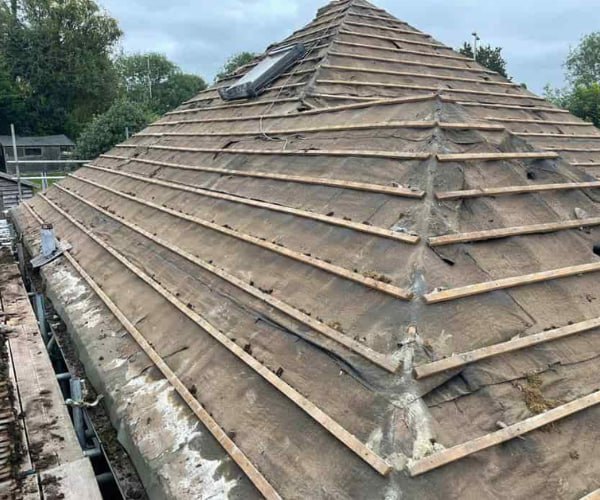Breathing Easy: Ensuring Proper Roof Ventilation During Hipped Roof Re-Roofing
Introduction: When it comes to hipped roof re-roofing, ensuring proper roof ventilation is crucial for maintaining a healthy, comfortable, and energy-efficient home environment. Adequate ventilation helps regulate temperature, reduce moisture buildup, and extend the lifespan of roofing materials. At NRS Roofing Thrapston, we understand the importance of proper roof ventilation, and we’re here to share essential tips for ensuring optimal ventilation during hipped roof re-roofing projects.
1. Assess Current Ventilation
Before starting any re-roofing work, assessing the current ventilation system in your attic or roof space is essential. Determine the type, location, and condition of existing vents, including ridge vents, soffit vents, gable vents, and roof vents. Evaluate whether the current ventilation system is adequate for your home’s size, layout, and climate conditions or if improvements are needed to ensure proper airflow and ventilation.
2. Calculate Ventilation Requirements
Proper roof ventilation requires a balance between intake vents (such as soffit vents) and exhaust vents (such as ridge vents or roof vents) to facilitate continuous airflow and prevent moisture buildup. Calculate the ventilation requirements for your hipped roof based on the size and pitch of the roof, the attic space, and local building codes and regulations. Aim for a ventilation ratio of 1 square foot of ventilation area for every 150 square feet of attic space to ensure adequate airflow.
3. Install Intake and Exhaust Vents
During hipped roof re-roofing, installing both intake and exhaust vents is essential to create a balanced ventilation system. Intake vents, typically located along the eaves or soffits, allow fresh air to enter the attic space, while exhaust vents, such as ridge vents or roof vents, expel stale air and moisture from the attic. Install intake vents evenly spaced along the eaves or soffits and exhaust vents at the roof’s highest point, ensuring proper airflow throughout the attic space.
4. Consider Ventilation Upgrades
If your existing ventilation system is inadequate or outdated, consider upgrading to more efficient ventilation solutions during hipped roof re-roofing. Ridge vents offer continuous ventilation along the entire length of the roof ridge, providing superior airflow and moisture control compared to traditional roof vents. Additionally, attic fans or powered ventilation systems can enhance ventilation in areas with limited airflow or high moisture levels, improving overall ventilation effectiveness.
5. Maintain Ventilation Openings
Once the hipped roof re-roofing project is complete, it’s essential to maintain ventilation openings and ensure they remain unobstructed over time. Keep intake vents free from debris, insulation, or other obstructions that could impede airflow. Regularly inspect and clean exhaust vents to prevent blockages and ensure proper ventilation. Monitor attic temperature and humidity levels to detect any signs of inadequate ventilation and address ventilation issues promptly to prevent moisture-related problems.
Conclusion: Proper roof ventilation is essential for maintaining a healthy, comfortable, and energy-efficient home environment during hipped roof re-roofing projects. Homeowners can ensure optimal airflow and moisture control in their attic spaces by assessing current ventilation, calculating ventilation requirements, installing intake and exhaust vents, considering ventilation upgrades, and maintaining ventilation openings.
Call us on: 01832 778 362
Click here to find out more about NRS Roofing Thrapston
Click here to complete our contact form and see how we can help with your roofing needs.

